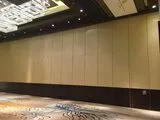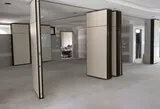Soundproof Stacking Doors
Discover the Benefits of
Soundproof Stacking Doors
Soundproof stacking doors cost more than regular stacking doors with no soundproofing properties, so what makes them worth the investment? In this short article we'll answer this question & more.
Scroll to the bottom to submit your enquiry now.
What is Soundproofing & Why Is It Important?
Soundproofing refers to the process of reducing or eliminating the transmission of sound from one area to another. It involves incorporating materials and techniques that can block, absorb or dampen sound waves, resulting in a quieter and more peaceful environment.
The importance of soundproofing cannot be overstated, especially in certain settings where noise control is crucial. For instance, in commercial spaces such as offices, conference rooms, or studios, soundproofing ensures confidentiality during meetings and enhances productivity by minimizing distractions.
Stacking Doors Are Also Known by Other Names
Let's clear up the terminology, here are some other names for stacking doors. Stacking doors are also known as folding doors, moveable partitions or movable stacking partitions. A popular type of moveable partition is the movable wall.
Soundproof Stacking Doors VS Sliding Doors
A soundproof stacking door is very different from a sliding door in terms of its mechanism and functionality. While a sliding door operates by sliding along a track, a stacking door is designed to fold and stack neatly when opened, maximising the available space and providing an unobstructed view. Sliding doors are limited in their thickness, maximum width and acoustic performance however soundproof stacking doors do not have these limitations. Sliding doors have a light weight hollow aluminium frame, where's as soundproof stacking doors have a stronger internal, acoustically insulated frame.
Soundproof Stacking Doors VS Folding Doors
Yes, they are actually very different. A folding door collapse or expands like a concertina. Folding doors are lightweight, are not able to create an airtight seal and they are not suitable for soundproofing. However soundproof stacking doors are heavy, come with a full set of perimeter seals and will block sound very efficiently. Folding doors simply do not have sufficient internal volume / air space to offer sufficient sound attenuation between rooms in a busy commercial space. Stacking doors are far thicker and are filler with the type of acoustic insulation that provides enhanced levels of sound isolation.
What Functionality do Stacking Doors Offer?
Stacking doors are used to subdivide a large space into two or more smaller spaces. This is advantageous for a couple of reasons:
a) A small group of people can feel lost in a large venue, so partitioning off a section will provide a smaller space that feels like a better fit.
b) You may want to portion a large halls into 2-3 smaller spaces so that you can host multiple meetings simultaneously.
c) Likewise when you have a concert of large conference then you want to be able to easily remove the partitions to create a large space.
Total Width of Moveable Partitions
Regardless of the width of the venue that you need to partition, stacking doors can be made to fit right down to the exact measurement in mm. So therefore even if your venue has a large opening, stacking doors can be a great solution.
Thermal Insulation Benefits of Acoustic Stacking Doors
Because stacking doors can be used to fully partition a large space, into two or more smaller spaces, it becomes much easier and cost effective to use air conditioning to control the thermal insulation of the smaller volume of space.
Types of Venues That Will Benefit From Stacking Doors
- Hotels
- Conference venues
- Boardrooms / meeting rooms
- Training rooms
- Churches
- Schools: Halls & Classrooms
- Lecture halls
Soundproof Stacking Doors VS Regular Stacking Doors
A regular stacking door will partition the area visually but is not specifically designed to block sound.
Many times when a room is subdivided by a stacking door, it's because both venues will be used simultaneously for different meetings. If the room is only partitioned by a regular stacking door then the sound from the people meeting on either side of the door, including any unwanted noises, will be heard on the other side as well. Oops, this could be a problem. A certain level of acoustic comfort is required for the proper functioning of the venue.
At best hearing the sounds of two meetings will be frustrating and a big distraction but at worst it could make it impossible for both meeting spaces to be used at the same time. If this happens in a hotel or conference venue which hires out its space for functions, then this could even result in a loss of revenue.
In contrast to the above scenario, soundproof stacking doors are designed to block sound, as well as partition the area visually. Hence the major benefit of a soundproof stacking door system, such as sound insulation, is that it allows the venues on either side to be used at the same time without disrupting each other.
What types of sounds do you need your stacking door to block?
This is a very important question to ask, as it will determine what the acoustic specification should be, to ensure that the stacking door is well suited to the function of your space. To state the obvious, the higher the potential sound levels on either side of the stacking door, the better the soundproofing of the stacking door system needs to be.
Here are some questions you should ask yourself.
Which scenario seems like a match for you?
1. Low level noise such as adults talking in a controlled manner, such as executives in a corporate training or planning session.
2. Animated or louder talking such as children in a classroom or adults who might engage a loud conversation such as attorneys with clients who might have strong disagreements and even express this in loud voices.
3. Is it possible that music will be played on either side of the venue? Music can be used as part of a presentation, be background music at an event or could be children in a music class etc.
4. Is it possible that confidential information will be discussed in the venue? The last thing you want is for confidential financial or personal information to be overheard by people in the adjacent space. This could not only be embarrassing but even be a breach of confidentiality, non-disclosure agreements.
Practical Differences Between A Regular Stacking Door & A Soundproof Stacking Door
Lets break this down for you, there are two main differences:
1. Mass
A regular stacking door will be lighter in construction, it may even have a hollow core. As an example, we know that a typical hollow core internal door stops very little sound. By contrast, a soundproof stacking door includes both the necessary mass and sound absorbing materials inside the door to block sound.
2. Soundproof Seals VS Simple Weatherstrip
We know that where there's airflow, sound will also be transmitted through the same gap/s. As an example, if you sit inside a well insulated car with all the windows closed it can be very quiet but open your window even a little and all the outside sounds are suddenly clearly audible. A regular stacking door is going to have gaps beneath, above and even between the doors - all these gaps will allow sound to pass through to the other side of the partition. A soundproof door is especially designed to completely seal all the open spaces around the doors when they are closed.
The STC & Rw Acoustic Rating Systems
Most people know that sound levels are measured in decibels, abbreviated as dB, however proper rating systems have been developed and are widely used by professionals to indicate the level of soundproofing that a moveable partition door provides. Whilst there are various rating systems used around the world, the most popular rating system for soundproof doors is the STC rating. With both the STC and Rw ratings, the higher the number of the rating given, the better the soundproofing the partition provides.
Two relatable examples to help you understand what level of soundproofing to expect from the STC rating system:
1. Hollow drywall STC 31
Conversation is can clearly be heard on the other side but is somewhat muffled.
2. Plastered, double brick cavity wall STC 54
Conversation is inaudible on the other side.
A Wholistic Approach Is Necessary To Ensure That The Soundproofing Is Done Right
Very Important: The other structural elements surrounding the stacking doors will also determine the level of soundproofing achieved in adjacent rooms.
For example, it would be senseless to install a soundproof door but have:
a) A hollow drywall adjacent to it
b) A hollow ceiling with no soundproofing
c) Thin glass panels with insufficient acoustic insulation
d) Hollow hinged doors
e) Doors with no acoustic seals
However, when the planning factors in all the above issues and appropriate steps are taken to increase the acoustic insulation of the other building structures, then you can expect an excellent outcome.
Specification
Because we understand that there is no "one size fits all" solution to stacking doors, we offer two ranges:
1. Econo: This is our budget option.
2. Premium: This range features multiple upgrades to the frame, doors, seals and mechanism. Our premium doors are know for their durability and good quality.
Finishes for Stacking Doors
We off a range of finishes including
1. Melamine
2. HPL (high pressure laminate)
3. Veneer
4. Upholstered
5. Glass
These finishes can even be combines to provide the level of elegance that suits your venue.
Availability
We ship our doors throughout South Africa, Africa and indeed anywhere else in the world where they may be required.
For more information please view the presentation below.
Got More Soundproofing Questions?
Check These Helpful Blogs
Fill in your details below to request a quote.
Required field!








